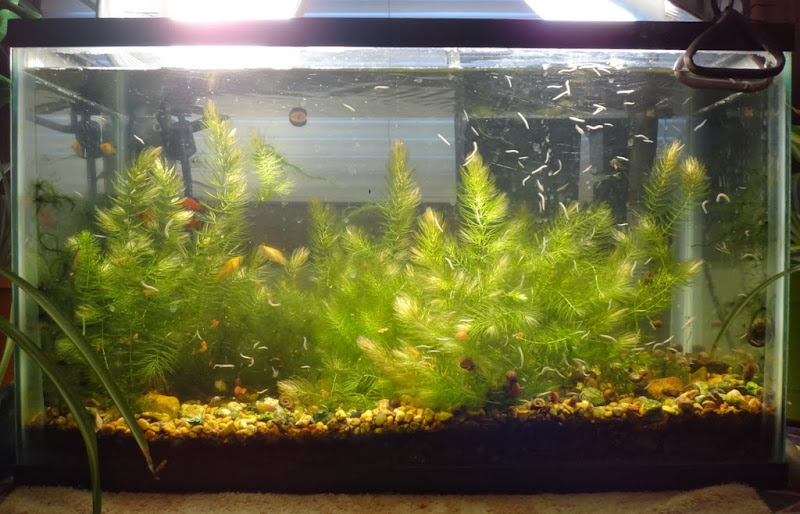

Posted 19 February 2014 - 08:37 PM


Posted 19 February 2014 - 08:39 PM
Posted 19 February 2014 - 08:50 PM
Posted 19 February 2014 - 08:51 PM
Posted 19 February 2014 - 08:54 PM
Dude! Those don't look like native fish in that tank. I'l bet a nice Cyprinella would eat those up!
Posted 19 February 2014 - 09:04 PM
Posted 19 February 2014 - 10:48 PM

Posted 19 February 2014 - 11:40 PM
Posted 20 February 2014 - 12:25 AM
Posted 20 February 2014 - 10:43 AM
Posted 20 February 2014 - 10:59 AM
Really? Interesting. They're in the guppy and heterandria formosa tank where the babies are huge,so I figured they couldn't do any damage there. But yeah, there was never any plan to introduce them to the elassoma tanks; there is no room for variables there.Planaria CAN eat fish eggs and maybe newborn wrigglers that cant swim yet.
lol there are planaria vendors. I didn't have any plans to breed the planaria for selling, but now I'm wondering what they'd fetch me on aquabid ha ha ha$9 for 30 planaria at Carolina Biol Supply
Posted 20 February 2014 - 11:11 AM
Posted 20 February 2014 - 11:20 AM
Oh yeah, I'd forgotten they can transfer memories from one to another. What a neat creature.Basic biology & culture methods for protozoa, planaria, crustacea, other inverts:
http://www.carolina....vert-Manual.pdf
Posted 20 February 2014 - 11:51 AM
Posted 20 February 2014 - 11:54 AM
Posted 02 March 2014 - 05:15 AM
Posted 02 March 2014 - 03:40 PM
Posted 02 April 2014 - 12:15 AM
Posted 02 April 2014 - 07:55 AM
Posted 02 April 2014 - 08:17 AM
0 members, 0 guests, 0 anonymous users